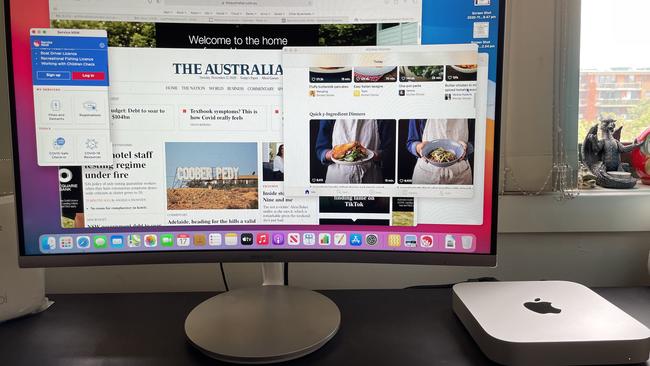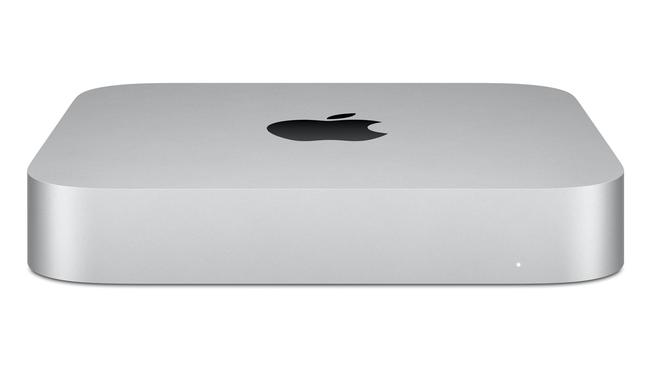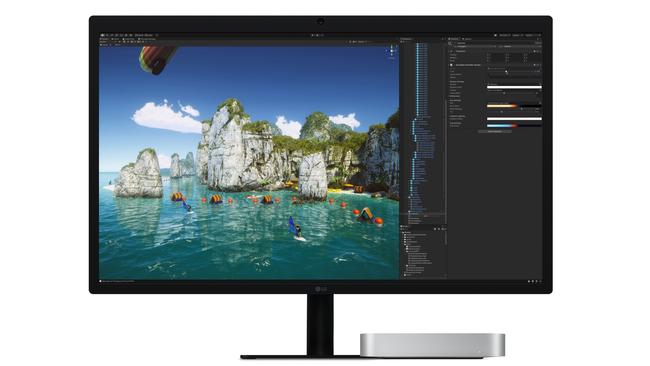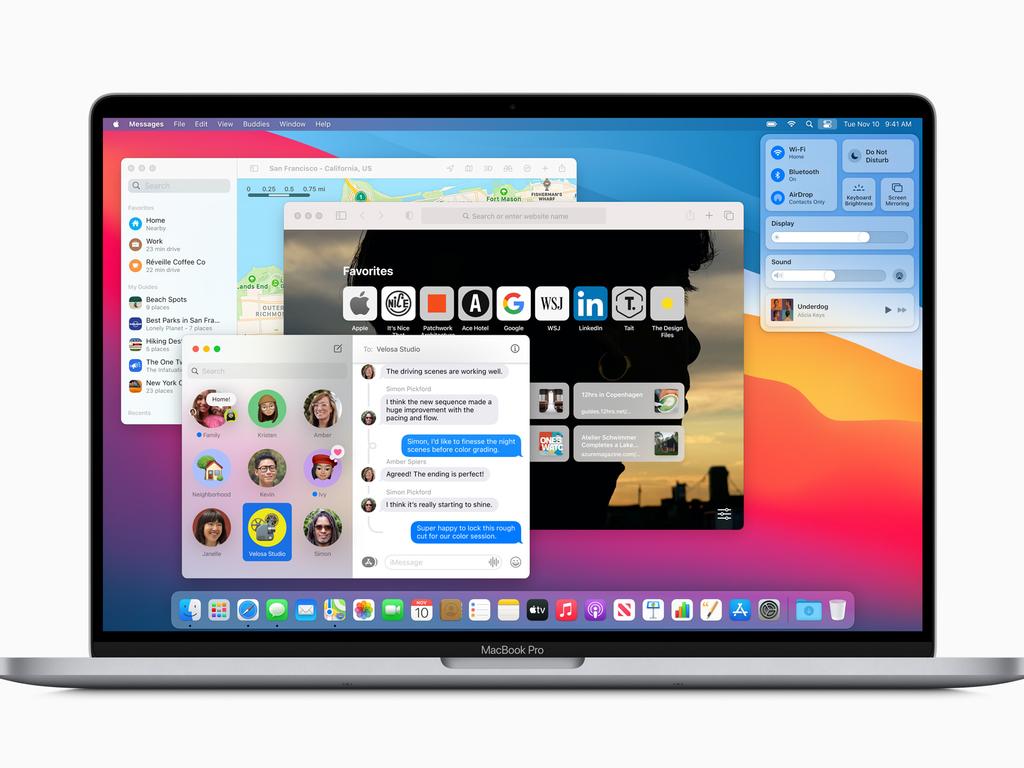Review: The Mac mini with Apple’s M1 chip could be your desktop solution at home
Apple’s new mac Mini desktop computer could be your perfect companion at home.

While iPhones, iPads and Macs have flourished, the Mac mini has seemed like a side line at Apple.
It’s the little square box that is Apple’s closest approximation to a regular desktop computer. As with a PC, you add your own screen, keyboard and mouse. It’s taken a back seat to Apple’s stellar devices but my prediction is, no more.
The Mac mini is also one of Apple’s oldest current devices, having originally come to market in 2005 – two years before the iPhone – as a cheap way to own an Apple laptop.
The first three generations were somewhat underpowered and it wasn’t until 2018 Apple seemed serious about making a Mac mini with some processing guts.
Well, 2020 is with us and so is the pandemic, working from home and so is Apple’s new whizzbang powerful M1 processor that it is releasing to market now. The M1 is a full system-in-a-chip with its own processor, graphics unit and neural engine capable of machine language tasks.
The good news is that Apple has slotted the M1 chip into the Mac mini, transforming it from an okay performer to a desktop powerhouse.

This fifth-generation Mac mini has arrived as the populus seems increasingly content with working some of their time at home. Consumers may be in the market for a decent desktop that offers this. In addition, Apple has dropped $200 from the price of the previous generation Mac mini, so the stars and planets are aligned for good sales.
The M1 processor also makes these new Apple computers a great story. Apple is moving in a new direction and how the M1 performs is a really interesting exercise.
Form-factor wise, the Mac mini is a little box that sits inconspicuously beside your monitor. The ports are tucked away at the back which helps you get around the spaghetti highway of cords often associated with a desktop PC. The Mac mini has the latest wireless connectivity: Bluetooth 5 and Wi-Fi 6.
It has two Thunderbolt 3/USB 4 ports which support DisplayPort. Thunderbolt 3 offers a theoretically data transfer speed of up to 40 Gigabits per second, USB 3.1 offers 10 Gbps. There are two USB-A ports, HDMI 2.0 and a Gigabit Ethernet port.
Apple says the Mac mini can simultaneously support one display at up to 6k resolution and another at up to 4K, both at 60 Hz.
The fact you need to supply your own monitor has pluses and minuses. On the one hand, it’s nice to have a display and computer combined, as with an iMac. On the other hand, if the display breaks down, you still have a functioning computer box and visa versa. You don’t have to repurchase both segments.

Not all benchmarks are working yet with this new Apple homegrown processor, however I managed to run a few. CPU Benchmark rated the M1 processor at 3.19 Gigahertz and confirmed 8GB of memory. The M1 is an 8-core processor with four fast cores and four cores designed for power efficiency.
Cinebench R23 scored single core performance that was almost equivalent to an 11th generation Intel Core i7 1165G7, launched in the third quarter of this year.
Perhaps the best way of checking the ability of the Mac mini is by looking at tasks it could perform. I could open the video editing package Final Cut Pro and edit, render and playback 8K video – albeit that these were short 8K clips. You may never do this, but it’s an indicator the Mac mini would handle everyday video editing tasks with relative ease.
I could run Affinity Publisher and zoom in an ultra-high resolution image some 651,000 times to see what was a microscopic robot in full screen. The zooming at times wasn’t smooth but it worked. Again, it suggests the CPU and graphics capability isn’t lacking for everyday use.

If you are a professional user needing high end computing power and graphics, you’ll probably still gravitate towards a MacBook Pro. For everyday users, including those who perform decent resolution photo editing and 4K video editing, the Mac mini can do the job. You’ll need a high enough quality monitor to match this capability.
The use of the M1 chip heralds a major change in the architecture of programs that can run on Apple computers. It’s out with programs that run on Intel systems and in with ones that use the ARM architecture of the M1.
In theory this should be disastrous as it suggests none of your existing programs will work on the new machines. However, Apple has spent months preparing for this change with the developer community.
First, it has supplied developers with the tools to recompile their code so that their apps will work on the new M1 platform. At this stage, as I discovered, many do work but some are yet to be converted.

Second, Apple has provided a tool called Rosetta 2 – an interpreter that can take the old code and convert it to new code as it runs in real time. The system tells you it is installing Rosetta 2 when you run your first Intel app on this Mac mini, but that’s it.
The fact that this interpreter process can run a number of games in real time is impressive. I could install apps like LibreOffice and VLC media player and Rosetta ran them seamlessly. I didn’t even notice this interpreter process.
Third, Apple has been encouraging its developer community to build what it calls “universal apps” that will work on both Intel and M1 Macs. Apple’s compilers can generate code for both device types.
There is one more trick up Apple’s sleeve. Its M1 processor can run your iPhone and iPad apps natively on these Macs. When you go to the Mac app store, and select your account, there are separate columns for Mac apps and iPhone/iPad apps and you can select iPhone and tablet apps to run on the Mac mini. These apps run in their own Window on the Mac.

There’s a few qualifications for this. First, Macs do not support touch screens, so there will be a range of apps including many games that you operate with prods and swipes that aren’t going to work. I tried playing Train Conductor 2 using a mouse instead of my finger to shunt those speeding trains. It isn’t the same.
The same applies to apps that use the sensors found in iPhones and iPads but not Macs. There may be no point to them running on Macs.
In other cases, there might already be a Mac app that does the job better, or cases where the iPhone version of an app isn’t available for Macs.
The area taken up by iPhone and iPad apps tends to look small on the display and you can’t resize it to make it larger. That means more scrolling and it can be frustrating. Depending on the developer, you might be stuck with the app permanently displayed in portrait or permanently displayed in landscape and unable to change it.
Still, you might enjoy running a few phone or iPad apps on your Mac where it does make a difference. (I was hoping that I might see Instagram among the iPhone apps on offer so I could upload pics from this Mac, but so far, no.)

The Mac mini runs the new Apple Big Sur operating system whose features include closer checking of the privacy and security of apps you run. I did experience a few software glitches along the way which hopefully will be resolved in system updates.
Overall, the Mac mini with an M1 processor is powerful and impressive and should be perfect for many users now working at home, provided they don’t run applications that are very demanding resource wise. You can enjoy a relatively uncluttered desk with such a small form factor.
You pay $1,099 or $1,399 for Mac minis with 256GB and 512GB of storage and they are available now.
Apple still sells an Intel-based Mac mini with a 3.0GHz Intel Core i5 6-Core processor and 512GB of storage for $1,699.





To join the conversation, please log in. Don't have an account? Register
Join the conversation, you are commenting as Logout